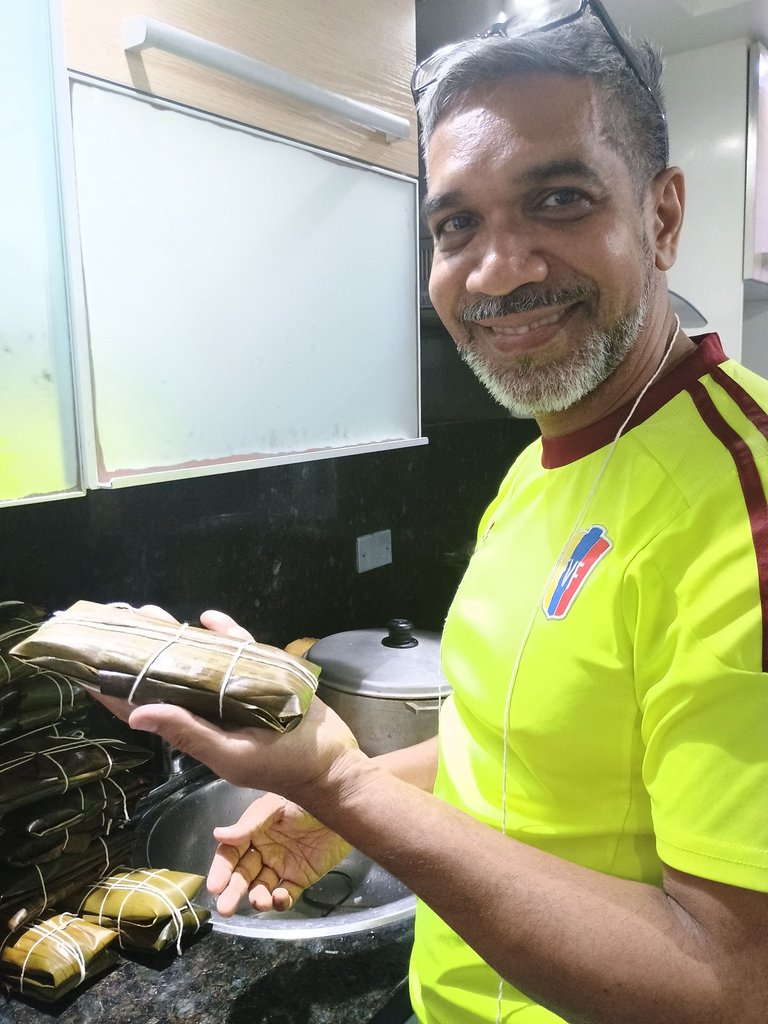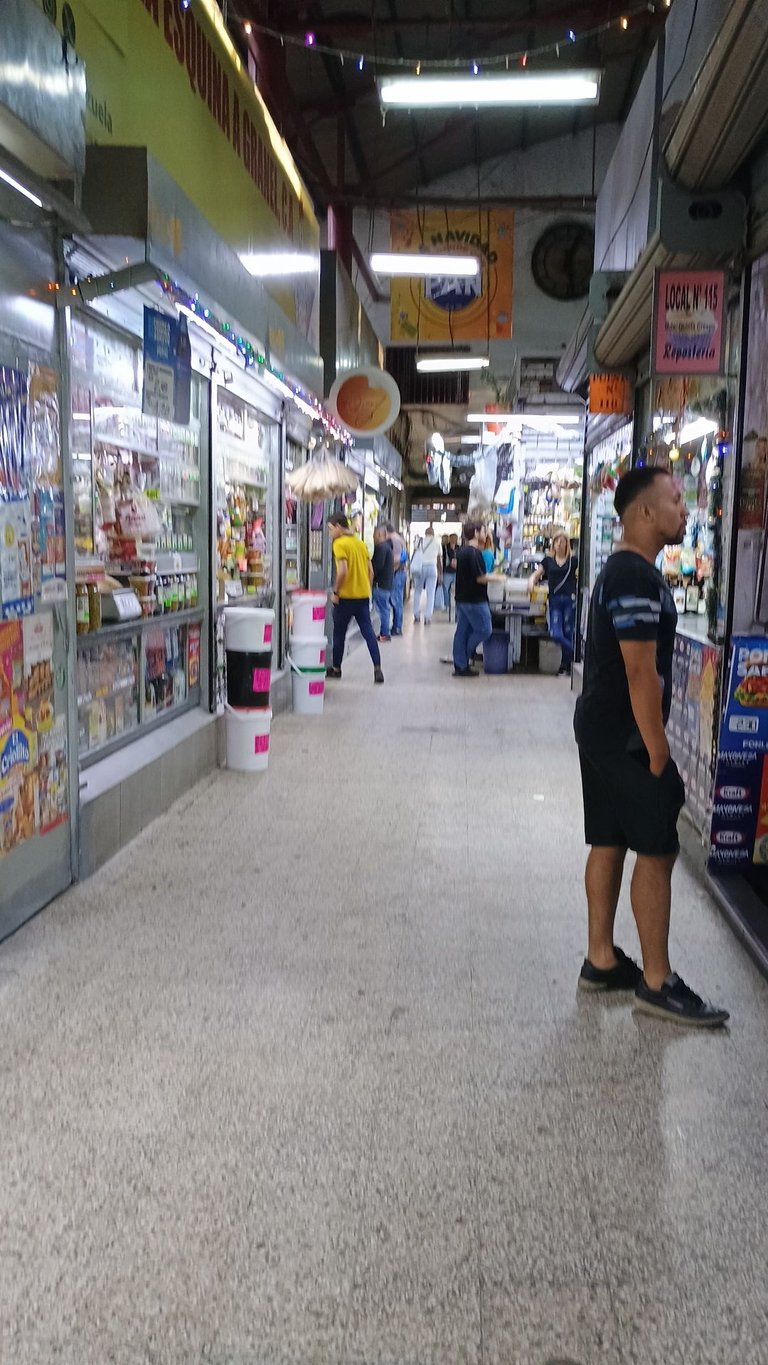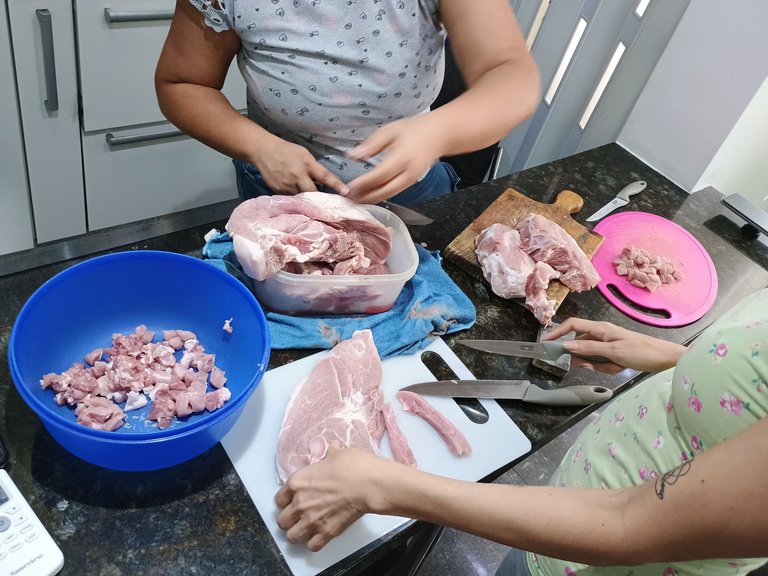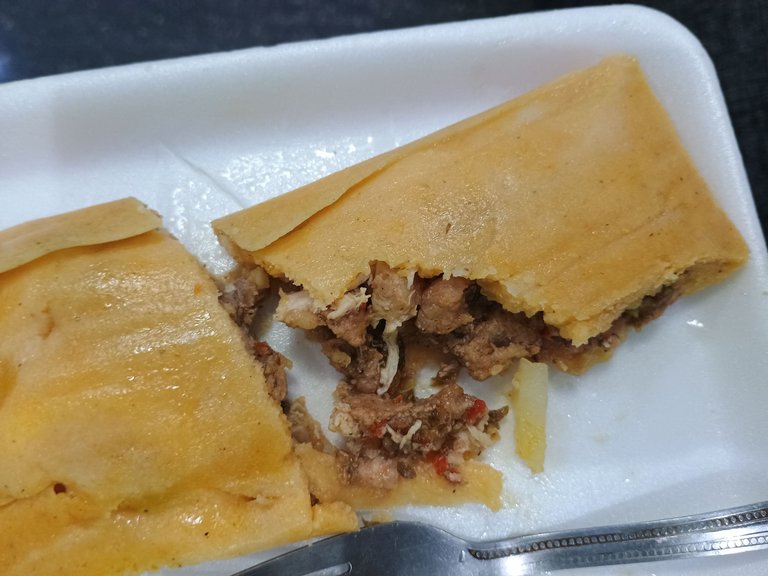The hallaca is one of Venezuela's typical Christmas food. They are the main ingredient of a dish that includes ham break, chicken salad, roasted pork hind leg, and papaya preserve.

In the last few years, I had abandoned the tradition of making hallacas, a demanding and time consuming activity that requires the colaboración of as many family members as possible.
It is precisely in that collaboration that the entertaining and family value of this tradition resides. The fragmentación of our families, due to the political and economic crisis that has occupied most of my posts on this platform has been a determining factor in the waning of this tradition.

This year, the contagious enthusiasm of my nephew's wife, who faithfully keeps the tradition, even if she has to do it alone, left me no option but to join in.
We started two days ago at the closest public market: Quinta Crespo. It looks very chaotic outside, like all our public markets, but it was surprisingly clean (for our standards, especially of compared with our market in Cumaná).

We bought all the ingredients there, including the thread or yarn we use to to tie the hallacas up.

All the ingredients looked fresh. These sweet pepper especially called my attention; they are a key ingredient for the stew. Hallacas are usually made with pork, although the main meat changes from region to region and depending on personal tastes or needs.

My niece decided to prepare most of the batch with pork, but she would add some chicken for some of her friends from Caracas who usually prefer them mixed (beef, pork, and chicken).

My wife and I helped chopping the meat and enjoyed a by-product that is usually prepared as an appetizer.

I'm taking about the spiced bollitos de chicharrón, little balls of corn dough spiced with hot pepper and chopped friend pork skin.

Usually, we fold them in banana leaves too, but the leaves we're not cleaned yet and we used aluminum foil instead.

We accompanied them with a coriander dip.

After all the pork was chopped, my niece prepared the stew. It was too late to work on the assembling of the hallacas, so we agreed to continue the next day.

Yesterday, I volunteered to clean the banana leaves. That includes wiping them with vinegar and oil and cutting the borders of the midrib.

@manujune helped with the scissors (unfortunatly, I did not take that pictures).
It took us a couple of hours to go through 4 kilos of leaves.

Later in the evening, my niece put the hallacas together and her daughter and I helped tying them up.

It felt good to experience this tradition again.

It felt good to feel the warmth of a family again, in harmony, which is the main goal of this tradition.

We usually tie them in pairs, but for different reasons they can also be tied individually. This time, to sepárate the ones with chicken from the rest.

35-40 minutes on the stove and they will be ready.

We had the priviledge of tasting the first ones.
They were delicious. A bit spicy, which is good. Unlile the mexican tamal, with which the hallaca is usually compared, most Venezuelans do not use hot pepper at all.

The rest will be refrigerated until Christmas and will be joined by the other ingredients of our Christmas dish.

This post has been manually curated by the Inkwell Community, @hlezama. You convey the warmth of family and the relationship that food often has to love in your writing. Tradition, family and love are three themes blended together beautifully in this piece.
A Happy Christmas to you and yours :)
Thank you very much.
Congratulations @hlezama! You have completed the following achievement on the Hive blockchain And have been rewarded with New badge(s)
Your next target is to reach 180000 upvotes.
You can view your badges on your board and compare yourself to others in the Ranking
If you no longer want to receive notifications, reply to this comment with the word
STOPYo quiero profe 😂 de ve buenísimo todo.
Saludos, @elizabeths14
Bien pueda! 😊
Si quedaron muy sabrosas. Las de (solo) cochino siguen siendo nuestras favoritas. Esperamos algún día poder compartir 🙏🥂